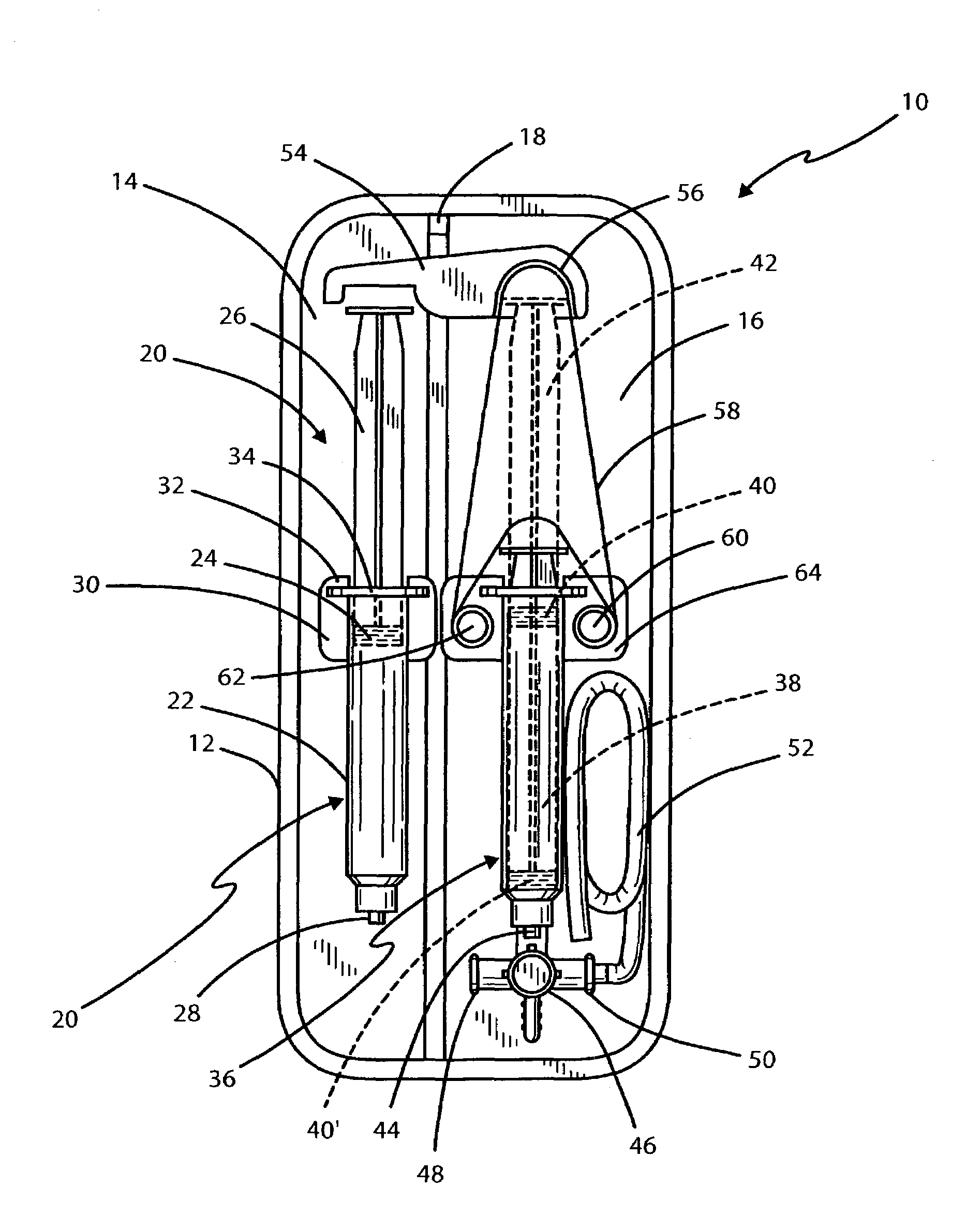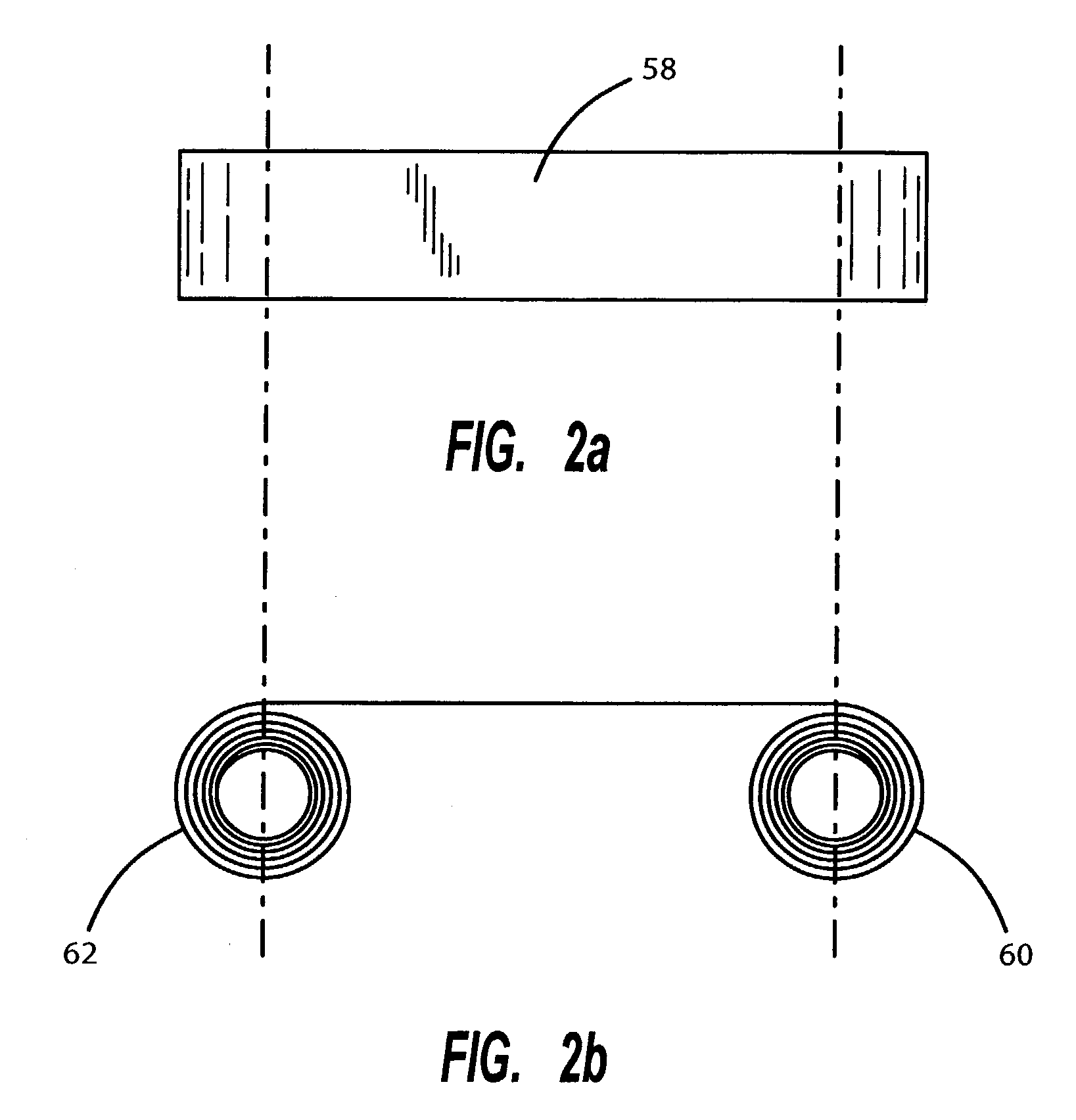Drug delivery apparatus
a technology of a delivery device and a stent, which is applied in the field of dispensers, can solve the problems of less accurate and comparable mechanical pumps, less features, and more of a problem of bio/drug compatibility
- Summary
- Abstract
- Description
- Claims
- Application Information
AI Technical Summary
Benefits of technology
Problems solved by technology
Method used
Image
Examples
Embodiment Construction
[0027]Referring first to FIG. 1, there is indicated generally by numeral 10 a fully mechanical dispenser for the controlled delivery of a liquid medicament to a patient. The device 10 is seen to comprise a molded plastic or metal housing 12 that is effectively divided into two compartments 14 and 16 by a longitudinally extending rail 18 that is integrally molded with the housing 12. Contained within the compartment 14 is a first syringe 20 of a conventional design having a glass or plastic reservoir 22 containing the drug to be administered. Fitted into the reservoir is an elastomeric plunger 24 that is affixed to a lower end of a plunger rod 26. The reservoir 22 has an outlet port 28 at a distal end thereof and which is adapted to be coupled to an ejection site on an administration set (not shown) leading to the patient. Depression of the plunger 26, of course, forces the liquid medicament from the reservoir 22 out through the outlet port 28 of the syringe 20. As used throughout th...
PUM
 Login to View More
Login to View More Abstract
Description
Claims
Application Information
 Login to View More
Login to View More - R&D
- Intellectual Property
- Life Sciences
- Materials
- Tech Scout
- Unparalleled Data Quality
- Higher Quality Content
- 60% Fewer Hallucinations
Browse by: Latest US Patents, China's latest patents, Technical Efficacy Thesaurus, Application Domain, Technology Topic, Popular Technical Reports.
© 2025 PatSnap. All rights reserved.Legal|Privacy policy|Modern Slavery Act Transparency Statement|Sitemap|About US| Contact US: help@patsnap.com



